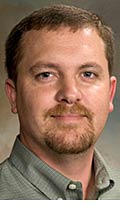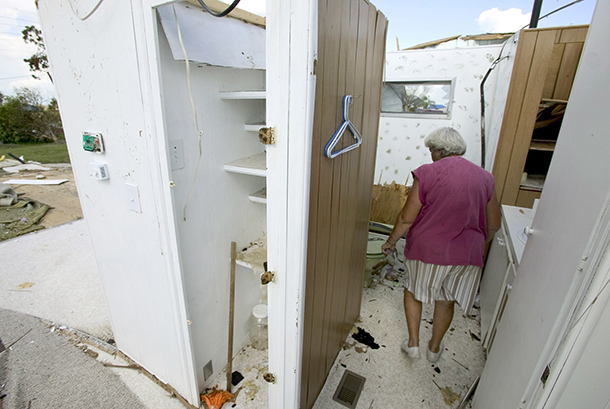Brody, Highfield research cited in 'NOVA,' New York Times articles

Sam Brody

Wesley Highfield
" [Inside the Megastorm] (http://www.pbs.org/wgbh/nova/earth/inside-the-megastorm.html) ," a recent episode of the PBS series, "NOVA," was supplemented by research on effective flood mitigation strategies conducted by [Hazard Reduction and Recovery Center] (http://hrrc.arch.tamu.edu/) research fellows Sam Brody and Wesley Highfield.
In an online article, " [Forecast for the Floodplains] (http://www.pbs.org/wgbh/nova/earth/forecast-floodplains.html) ," supporting the show, the Texas A&M researchers explained how their analysis of 18 different FEMA flood mitigation strategies show that, on average, communities that elevated structures above projected flood levels saved almost $1 billion a year in expected flood damage, while those protecting open space in floodplains saved an average of $547,000 per year.
Brody has a joint appointment to the Department of Landscape Architecture and Urban Planning at the Texas A&M University and the Department of Marine Sciences at Texas A&M-Galveston where he is holder of the George P. Mitchell ’40 Chair in Sustainable Coasts. He is also director of the university's newly established Institute for Sustainable Coastal Communities. Wesley Highfield is an assistant professor of marine sciences at TAMU-G.
"When a big disaster hits, there's an opportunity to learn," Brody told "NOVA" writer Rachel Nuwer. "Towns and cities that are more adaptive and open to learning, sharing information, and thinking systematically tend to do really well."
In Manatee County, Florida, for example, policymakers took action after a series of hurricanes struck the low-lying county in the early 2000s.
“Decision-makers changed their zoning laws to preserve natural areas and worked hard to maintain their storm water drainage system,” wrote Nuwer. “The county also committed itself to outreach, offering workshops in wind mitigation to harden homes against storm damage, for example, and providing centers dedicated to hurricane readiness and flood protection.”
Brody also told Nuwer why draining wetlands and building subdivisions and big box parking lots is courting trouble.
"When we pave, we take away the all-important function of naturally-occurring wetlands," said Brody, "We create a dual effect of compromising the system and putting people in harm's way."
Brody was also cited in a Nov. 11 Huffington Post [article] (http://www.huffingtonpost.com/2012/11/21/hurricane-sandy-new-york_n_2171199.html?utm_source=tamutimes&utm_medium=email&utm_campaign=2012-11-27) by Matt Sledge examining flood mitigation alternatives for New York City in the wake of Hurricane Sandy. In that article, Brody questioned the wisdom of constructing massive public works similar to the systems used in the Netherlands to mitigate coastal flooding.
"If we build a fortress, people are going to want to build behind it, and in places like Texas and New York that can be a real problem — it exacerbates development," Brody told Sledge.
Also, in a Dec. 4 New York Times story by Rachel Nuwer, " [Sand Dunes Alone Will Not Save the Day] (http://green.blogs.nytimes.com/2012/12/04/sand-dunes-alone-will-not-save-the-day/) ," Brody lauded the value of natural sand dunes in decreasing the vulnerability of coastal communities to storm surges.
“I think we should consider natural sand dunes as protective treasures,” said Brody. “Once you take those away, you can’t get them back, and inland communities become much more vulnerable.”
Next Post
Tags
- hazard reduction & recovery
- land development
- landscape architecture & urban planning
- planning
- research
- sustainability
Related Posts
College partners with TAMU-G on coastal research institute

Planning prof helps write paper urging coastal policy change

Eagle quotes profs on state’s vulnerability
Brody featured in FEMA video touting flood prevention tips

Texas A&M hazard team's 'scorecard' adopted by Norfolk
Follow Us
Facebook Twitter Vimeo Youtube Flickr RSS
Recent Posts

Planning prof heads study of disaster housing aid

A message from the dean

Former student remembered as expert planner

Leading educator named new head of Architecture Dept.





_thumbnail_small.png)
